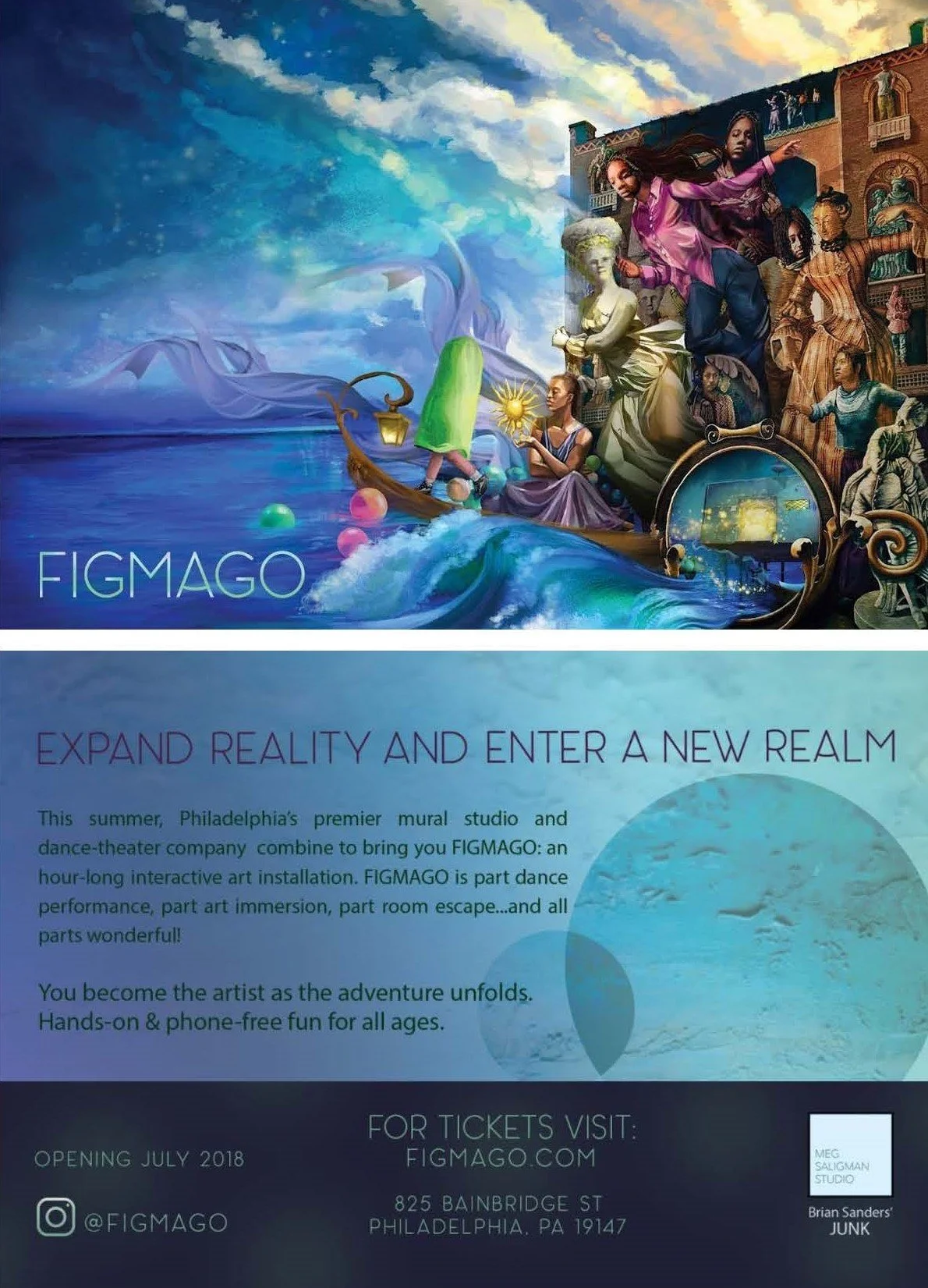Figmago | 2018
825 Bainbridge Street
Philadelphia Fringe Festival
Broad Street Review
July 24, 2018
by Henrik Eger
Meg Saligman and Brian Sanders’ JUNK present ‘FIGMAGO’
The world premiere of FIGMAGO — an interactive art installation, part dance performance, part escape room — is the brainchild of celebrated muralist Meg Saligman and Brian Sanders, founder and choreographer of the JUNK dance troupe. The show’s title derives from an amalgamation of two words: figment (as in “of imagination”) and imago, the final adult stage of a butterfly’s development, when it actually takes off and flies.
I've stood in front of Philadelphia’s murals many times, especially Philadelphia Muses at 13th and Locust Streets and Common Threads at Broad and Spring Garden. I’ve driven by them and waved at all the characters the artist brought to life — without having any idea who the painter is or was.
I never knew until I was invited to FIGMAGO and looked up Saligman online. The artist is one of the few women who has garnered international appreciation for her murals and installations.
Collaboration between two beloved Philadelphia artists and their teams
The theatrical/artistic event makes murals and installations come alive. FIGMAGO achieves this not only through visual arts, such as costumes, lighting, and stage design but through live performances combining a wide range of dance through the centuries, acrobatics, and aerial arts.
Saligman said she likes nothing more than standing on scaffolding, no matter how high, and painting all day long. The show seems to capture this sense of adventure, often feeling as if Michelangelo's mind was filtered through the surreal world of Alice in Wonderland.
Let the games begin
It all started with one of Saligman’s staff members — or so I thought — who gave us a quick guided tour through her huge studio, only to transform himself once we entered that surreal world. Instead of falling into a rabbit hole, we pushed through a doorway overcrowded with theatrical costumes of all sizes and shapes.
I couldn’t help but think of Alice again: “Would you tell me, please, which way I ought to go from here?”
No guidelines, honey. Rather, we were encouraged to become active participants, not just spectators. And so our group of about 15 to 20 people kept moving.
Yes, we had to crouch at times, getting into and through the hidden, subterranean world of Saligman’s studio on Braintree Street. But unlike Alice, who “bumped her head and bruised her soul,” we became part of the interactive process — not bruising our souls but morphing, like my group members, into a lively group of butterflies who hovered in various locations.
Sanders, never afraid to try new things, reaches another artistic height with the choreography he uses to bring Saligman’s surreal world to life. Statues abruptly become dancers. Two queens interrupt a meal with a fascinating fight, only to jump off the wooden medieval banquet table as best friends. A young woman and man suddenly transform into butterflies atop a gigantic waterfall. Cocoons birth aerial acrobats.
In every scene, the masterminds and performers behind this spectacle involve the audience in unexpected ways. We put together a painting cut into puzzle pieces, walk on a sandy beach to find blue shards of glass and build a new work of art, and — inspired by the rhythm of the latest club music — playfully do our own thing.
For example, one audience member, an older woman, picked a white tutu from the props in the largest hall, dancing beautifully behind a large, lit screen. Her silhouette looked like an Ophelia who hadn’t drowned but escaped.
A happy agnostic, I grabbed a large miter out of the props and, like a pope on speed, joined Ophelia, both of us dancing together like Mad Hatters — feeling liberated by flouting convention, having a wonderful time. We not only became part of the interactive group process, creating and witnessing art, but left laughing and renewed.

